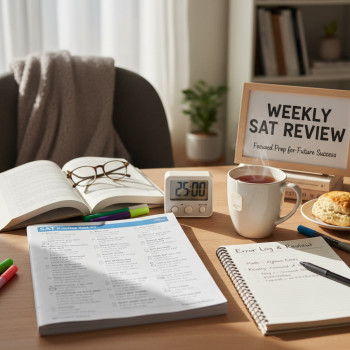Why SAT Scores Still Matter for Engineering and Computer Science
If you’re imagining a future building algorithms, designing bridges, or debugging life-changing code, welcome to the club. Engineering and Computer Science (CS) programs want thinkers who can reason, solve problems, and translate abstract concepts into results — and SAT scores are one of the ways admissions teams measure those abilities. While many colleges have experimented with test-optional policies in recent years, a meaningful number of engineering and CS programs still consider SAT performance when evaluating applicants, especially for merit aid and competitive placement.
Think of SAT scores as a piece of evidence in your academic story — not the whole book. The overall application (courses, grades, essays, recommendations, projects, and extracurriculars) is the full narrative. But a strong SAT Math score in particular can clarify readiness for rigorous STEM coursework and sometimes unlock scholarship dollars or placement in advanced first-year courses. If you want a quick benchmark: total SAT scores run 400–1600, split between Evidence-Based Reading & Writing (EBRW) and Math, each 200–800. You’ll want to set your personal target in the context of the schools you’re applying to and the competitiveness of the major. ([bigfuture.collegeboard.org]( Idea : A high school student at a desk with a laptop and a notepad, working through SAT math practice problems, a model bridge and a laptop with code in the background to evoke engineering and CS aspirations.
What Admissions Committees Look for in Engineering & CS Applicants
Understanding what admissions officers value will help you target your SAT prep strategically. For STEM majors, they typically look for:
- Evidence of quantitative strength: strong course choices (AP/IB/dual-enrollment calculus, physics), grades in those courses, and high Math SAT scores.
- Problem-solving and logical reasoning: demonstrated through test performance, project work, competitions (robotics, coding contests), and summer research or internships.
- Breadth and depth: strong STEM track record plus curiosity shown in projects, independent study, or clubs.
- Commitment and trajectory: improving grades, challenging course loads, and an authentic story in essays about why engineering/CS matters to you.
Remember: some highly selective programs use SATs for initial sorting or scholarship decisions. Others weigh them less, especially where holistic review is emphasized. But for many engineering applicants, the Math section is particularly influential — it signals whether you’re ready for first-year technical coursework.
How Much Weight Does Math Carry?
For STEM applicants, the Math score can feel like a headline. A high Math score reassures admissions committees that you can handle calculus-based courses, discrete math, and the quantitative demands of lab work. However, a balanced profile — strong math coursework, relevant projects (like building an app or participating in research), and good teacher recommendations — amplifies the impact of that score. In short: Math matters, but it’s most powerful when paired with demonstrated performance and curiosity.
Setting a Target SAT Score: Realistic Benchmarks
Setting the right target is strategic: aim too low and you leave opportunities on the table; aim unrealistically high and you set yourself up for unnecessary stress. Start by compiling the typical admitted SAT ranges for the schools you love, then adjust by major. For many top engineering and CS programs, competitive admitted student totals often cluster in the higher end of the SAT scale; for selective private and public flagship programs it’s common to see median scores well above the national average.
Here’s a simple, actionable approach to pick a target:
- Reach schools: pick a score at or above the 75th percentile for admitted engineering/CS students at your top-choice schools.
- Match schools: choose a target near the 50th percentile for your realistic options.
- Safety schools: target the 25th–50th percentile to ensure options if things don’t go perfectly on test day.
Use official school data and College Board tools to find these percentiles; they’re the most accurate starting point when creating a score goal. Planning this way helps you prioritize time for Math, or for the EBRW section if a school values balanced scores. ([bigfuture.collegeboard.org]( to Interpret Your Score Report (and Use It to Improve)
Raw scores are useful, but the College Board’s score report includes more granular information: subscores, cross-test scores, and question-level feedback (for digital SAT deliveries you may get even more actionable data). When you review your report, look for patterns:
- Types of Math questions missed (algebra, problem solving, advanced math, or data analysis).
- Reading question patterns (main idea, inference, evidence-based questions).
- Timing issues — are you missing easy questions because of time pressure?
These insights let you replace vague study goals (“I’ll study math”) with precise drills (“I’ll practice algebra function problems for 30 minutes with timed sets”). Many students find that focused practice on weak subskills yields bigger score gains than broad, unfocused studying.

Practical Prep Roadmap for Engineering & CS Applicants
Below is a multi-month plan you can adapt to your schedule. It assumes you have the school-year commitments typical of high school seniors and juniors, and it prioritizes efficiency and leverage.
Six-Month Plan (typical timeline)
- Month 1: Diagnostic test and target-setting. Build a baseline and set a Math and total score goal tied to your schools.
- Months 2–3: Focused content work. Address weak math domains, practice problem types, and build test strategies (annotation, passage mapping, and equation checking).
- Month 4: Timed practice sections and error log. Simulate test conditions and review mistakes to identify recurring patterns.
- Month 5: Final content polish; targeted practice on tricky topics and pacing drills.
- Month 6: Full-length practice tests every 1–2 weeks with detailed review. Taper intensity in the last week before test to avoid burnout.
If you have less than six months, compress the plan into focused sprints: diagnostic, intense targeted practice, then simulation and review.
Study Methods That Actually Work
- Active practice over passive review — solve problems, then analyze errors.
- Timed mini-sessions: practice 20–40 minute timed sets focused on a single question type.
- Error logs: record mistakes, note the root cause, and re-test those concepts later.
- Group study with problem exchanges — explaining solutions helps cement understanding.
Using Practice Tests the Smart Way
Practice tests are the backbone of effective prep. But it’s not just about volume — it’s how you review them. After every practice test, spend twice as much time reviewing as you did taking the test. For each missed question, answer two questions: (1) Was it knowledge or strategy? and (2) Could better pacing have avoided it? Fixing the underlying issue is how scores climb.
How Projects & Extracurriculars Complement SAT Scores
A high SAT Math score signals readiness, but real proof comes through projects and experiences. Admissions committees for engineering and CS respond strongly to applicants who have built things or led initiatives:
- Personal projects: apps, websites, robotics builds, or open-source contributions.
- Research or internships: even a short-term lab or industry experience demonstrates maturity and interest.
- Competitions: coding contests, hackathons, math olympiads, and robotics tournaments.
When you pair a solid SAT score with concrete achievements, your application becomes cohesive and convincing. Your essay can then tie your score (evidence of academic readiness) to your projects (evidence of curiosity and application).
Real-World Examples: How Scores Played Out
Consider two hypothetical applicants applying to a competitive CS program:
| Applicant | SAT Total | Math | Profile Highlights | Outcome |
|---|---|---|---|---|
| A | 1530 | 800 | AP Calculus BC, varsity robotics, internship, open-source project | Admitted with merit scholarship |
| B | 1410 | 740 | Strong coursework, led a coding club, small research project, compelling essay | Admitted, less likely to receive top merit aid but solid fit |
This illustrates that while a perfect or near-perfect Math score is a powerful asset, complementary experiences and narrative matter — they shape how an admissions team interprets your numerical results.
When to Report Scores and How to Use Superscoring
Many colleges practice superscoring — they consider the highest section scores across multiple test dates. That means you can focus on improving particular sections (for example, Math) and rely on earlier strong EBRW scores. Check each school’s policy: some superscore the SAT, others evaluate the highest single test sitting. Planning test dates around coursework and extracurricular commitments can let you maximize score improvements without disrupting senior-year responsibilities. For official dates, score release timing, and registration windows, consult the College Board’s SAT pages to stay current on deadlines and test formats. ([satsuite.collegeboard.org]( Tutoring: When It’s Worth the Investment
Many students progress fastest when they combine disciplined self-study with personalized support. One-on-one tutoring can accelerate improvement by delivering tailored explanations, identifying your most efficient study paths, and keeping you accountable. Personalized tutoring shines when:
- You have a narrow set of weaknesses and need targeted correction (e.g., advanced algebra or data analysis).
- You want a customized study plan that fits extracurricular commitments and course load.
- You benefit from mentorship, strategy coaching, and timed-test simulation.
Sparkl’s personalized tutoring offers these advantages: 1-on-1 guidance from expert tutors who understand engineering and CS expectations, tailored study plans that prioritize high-impact topics, and AI-driven insights to track progress and fine-tune practice. For many students aiming for top-tier engineering or CS programs, this focused guidance speeds improvement while reducing wasted study hours.
Test Day Tips for Engineering & CS Students
On test day, your brain is the product you want to deliver — not only knowledge but calm, efficient performance. Here are pragmatic tips:
- Simulate test conditions in practice tests (timing, breaks, and digital format if taking the digital SAT).
- Start with a quick warm-up: 10–15 minutes of light math drills to prime speed and accuracy.
- Pacing strategy: if a math problem is taking too long, mark it and move on — you’ll often recover more points by answering additional questions.
- Bring energy: sleep well the night before and eat a balanced breakfast; avoid sugar crashes mid-test.
Beyond the Score: Essays, Recommendations, and Fit
SAT scores are a quantifiable measure; essays, recommendations, and demonstrated fit provide qualitative context. For engineering and CS programs, essays that show curiosity, project-based initiative, and resilience in problem-solving pair especially well with strong SATs. Ask recommenders to comment on the evidence of analytical thinking or hands-on achievements in labs or competitions. These elements make the numerical score part of a persuasive whole.
Final Checklist: Preparing a Competitive Application
- Set a realistic SAT target tied to your chosen schools and major.
- Take an initial diagnostic and build a focused study plan (address subskills by frequency of mistakes).
- Combine practice tests with deep review; maintain an error log.
- Pursue projects or competitions that concretely demonstrate engineering/CS interest.
- Consider one-on-one tutoring if you need targeted help — personalized plans can maximize efficiency.
- Read each college’s testing policy and decide whether to submit scores or take advantage of superscoring.
- Finalize essays and recommendations that tie your scores to your story and goals.
Parting Advice: Keep Perspective and Build Momentum
Scores matter, especially in STEM fields, but they are not destiny. Admissions committees want to see evidence that you can do the work and that you’ll bring curiosity and creativity to the classroom. Treat the SAT as an amplifier for a strong academic record and rich extracurricular story. Strategic, targeted preparation — supported when needed by personalized tutoring and smart practice — will get you where you want to go.
If you’d like a tailored plan, consider building a study schedule that balances coursework, project work, and SAT practice. Even a few months of smart, focused preparation can produce meaningful gains, and resources like official College Board guidance and tailored tutoring make that journey much more efficient.
Ready to Start?
Set one clear, measurable goal today: register a diagnostic test date, list three target schools, and note the median SAT ranges for their admitted engineering/CS students. From there, create a weekly rhythm — short, focused study blocks, regular practice tests, and project time — and iterate based on results. With a plan, consistent effort, and the right support, you can strengthen both your score and your application story.
Good luck — the world needs more curious problem solvers like you.















No Comments
Leave a comment Cancel